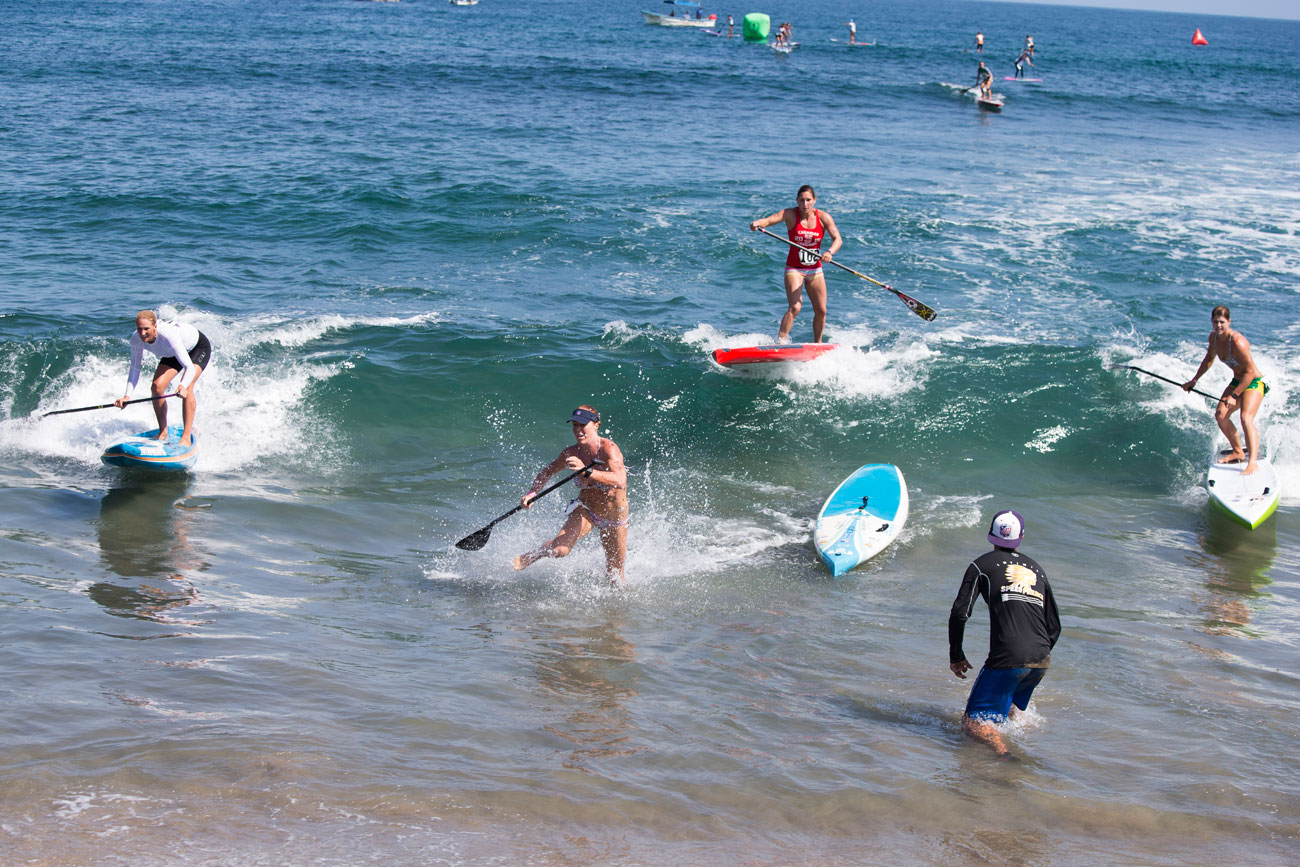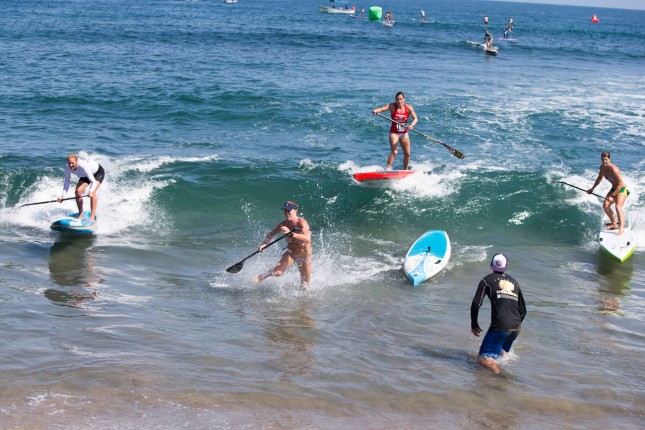
Fiji Update: ISA Says “No” to Gender Equality at 2016 Worlds, Will Reconsider in 2017

The top four women at last year’s ISA Worlds in Sayulita, Mexico (photo: Ben Reed/ISA)
After the debate about women’s participation in stand up paddling reached its zenith last month, and with suggestions the International Surfing Association (ISA) should take a lead in promoting gender equality, the “governing body” of SUP has decided against adding more women to the 2016 Worlds in Fiji but will reconsider before next year’s event.
As a quick refresher: Each discipline at the ISA World Championship – SUP racing, SUP surfing and prone racing – allows two men and one woman from each nation to compete. After our debate piece last month, the general consensus was that gender equality should be introduced, at least in the women’s SUP racing events where it would have no impact on the overall event schedule and where the depth of women’s paddling talent generally runs deepest.
The reasons were quite simple: Gender equality is a basic right, it fits with the Olympic movement and, perhaps most importantly, it would make the women’s racing events just as exciting as the men’s, which would in turn give the women’s sport more exposure and encourage more female participation in general.
Gender participation in elite SUP racing is extremely lopsided, with a staggering 3.8x more men participating in major SUP races than women. But because of this existing inequality, I believe our sport needs some form of ‘positive discrimination’ to prevent the status quo from becoming ingrained. And who better to take the lead than the so called “governing body” of stand up paddling.
However after genuinely considering the issue and initially leaning towards the idea, the ISA executive unanimously dismissed the proposal.
Why?
The Association suggested it would create a strain on logistics for the event in Fiji, which is a rather odd conclusion given this would have only added about 10-12 paddlers* to an event that already has upwards of 300 athletes and officials. Or in other words, it would have only required a 3% increase in logistical support.
(*There will only be around 15-18 nations sending women to Fiji, and some of those wouldn’t have sent a second athlete.)
I also don’t think the ISA realises there will be almost certainly be less athletes in Fiji than there were in Mexico last year, due to the added expense (for most teams) of flying to the remote South Pacific. Fiji is a dream destination for sure, but it’s also an expensive one — I’ve spoken with at least half the regular ISA teams, and most of them are struggling to field a full squad.
So the ISA is suggesting the primary reason is that they don’t want to put more of a burden on the host nation, however the size of the event is going to be smaller than last year anyway — adding 10-12 more women probably wouldn’t have increased the athlete quotas they originally negotiated with the hosts.
The ISA also suggested it was too late to notify teams about the changes. Again, this is a little disappointing considering the vast majority of nations are yet to select their squads. The Worlds are four months away — that’s light years in the world of stand up paddling.
But the reason this “No” decision is most disappointing is that it means the women’s SUP racing events will once again be less exciting than the men’s.
That’s not to say the top level female athletes are any less talented than the men, not at all, but the raw number of competitors on the start line means the women’s races always play second fiddle. All else being equal, a SUP race with 40 competitors is going to be more exciting than one with 15.
Consider these stats:
– The 2015 ISA Worlds long distance race had 44 men but only 19 women.
– The 2015 course race was even more lopsided, with 46 men and only 18 women
– The number of women is most likely going to be even lower this year; I predict there will be just 16 or 17 athletes on the start line
But the most damning statistic: There will only be 2 or 3 of the world’s top 10 ranked women competing in Fiji (and only 5 or 6 of the top 20), which makes the ‘World Championship’ title ring a little hollow. Or in other words: Around 75% of the world’s best women will be missing from our sport’s showcase event.
That not only detracts from the event itself, it’s also unfair to the top women that do compete at the Worlds, such as double gold medalist Candice Appleby, who are just as good no matter who they race against, but who don’t get the opportunity to truly shine because their stage isn’t elevated as high as the men’s.
The ISA’s decision not to introduce any form of gender equality this year also trigger’s an automatic change to the SUP Racer Star Ratings system, with the Worlds being downgraded from a 5-star to a 4-star event for both men and women. This automatic trigger was decided and announced back in April.
On a more positive note, the impression I get from the ISA is that gender equality, at least in the women’s SUP racing events, is likely to be introduced next year. So this whole debate will probably have a positive outcome eventually, however it’s still a little frustrating when things seem to move slower than they need to…
I really don’t envy the ISA. They’ve “adopted” a sport that has shown a lot of growing pains over the past few years and which has a very restless community. However if the International Surfing Association wants to be considered the true “governing body” of SUP for more than one week a year, they really need to start making some tough decisions and showing more leadership in general.
I’m sure Fiji will still be a great event, but it could have been even greater.



